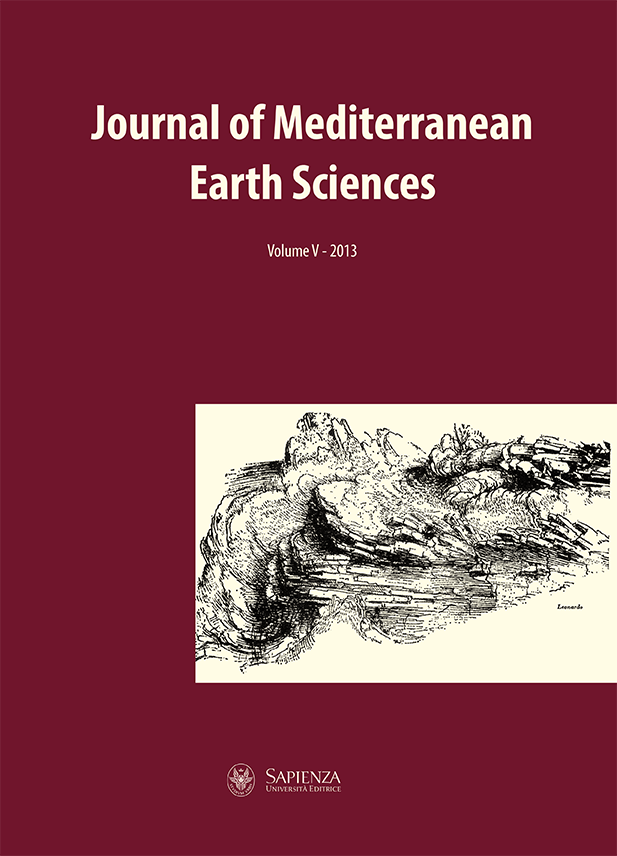Biostratigraphic interpretation of Miocene holoplanktonic mollusc assemblages from Gargano and Salento, Italy
DOI:
https://doi.org/10.3304/JMES.2013.001Abstract
Samples collected in the early 1990s from localities in Salento and Gargano yield additional information on the assemblages of Miocene pelagic Mollusca. From the Gargano localities Crocifisso di Varano, Sannicola Varano, Sannicandro Garganico and Torre Mileto a total of 33 species are recorded from the Lago di Varano Formation, together unequivocally demonstrating a Langhian age (Pteropod Zone 18a). In Salento, Lecce area, two localities were sampled (Cursi and Melpignano), predominantly from a phosphorite rich horizon in the strongly glauconitic, so-called ‘piromáfo’ level in the upper part of the Pietra Leccese Formation, from which 31 species are now known, most of them indicating a Langhian age, but some only known from Serravallian (Pteropod Zone 19) or Tortonian (Pteropod Zone 20) rocks. Therefore the reworked character of the Lecce assemblages is acknowledged. The “piromáfo” deposit proper is not older than Tortonian. Pteropods from rocks underlying the “piromáfo” level do not show signs of reworking and yield exclusively species characteristic of Pteropod Zone 18a and are therefore considered to be in situ and of Langhian ageABSTRACT - Samples collected in the early 1990s from localities in Salento and Gargano yield additional information on the assemblages of Miocene pelagic Mollusca. From the Gargano localities Crocifisso di Varano, Sannicola Varano, Sannicandro Garganico and Torre Mileto a total of 33 species are recorded from the Lago di Varano Formation, together unequivocally demonstrating a Langhian age (Pteropod Zone 18a). In Salento, Lecce area, two localities were sampled (Cursi and Melpignano), predominantly from a phosphorite rich horizon in the strongly glauconitic, so-called ‘piromáfo’ level in the upper part of the Pietra Leccese Formation, from which 31 species are now known, most of them indicating a Langhian age, but some only known from Serravallian (Pteropod Zone 19) or Tortonian (Pteropod Zone 20) rocks. Therefore the reworked character of the Lecce assemblages is acknowledged. The “piromáfo” deposit proper is not older than Tortonian. Pteropods from rocks underlying the “piromáfo” level do not show signs of reworking and yield exclusively species characteristic of Pteropod Zone 18a and are therefore considered to be in situ and of Langhian age.Downloads
How to Cite
Janssen, A. W. (2014). Biostratigraphic interpretation of Miocene holoplanktonic mollusc assemblages from Gargano and Salento, Italy. Journal of Mediterranean Earth Sciences, 5. https://doi.org/10.3304/JMES.2013.001
Issue
Section
Articles
License
The submission has not been previously published, nor is it before another journal for consideration (or an explanation has been provided in Comments to the Editor).


